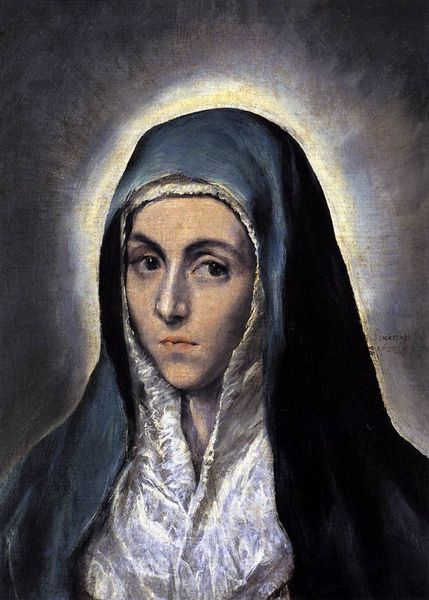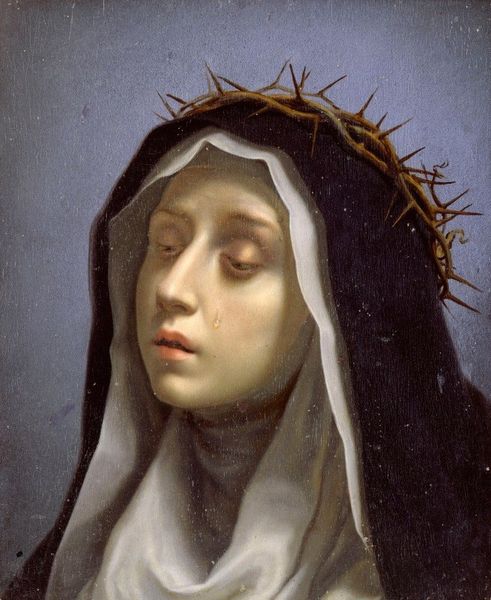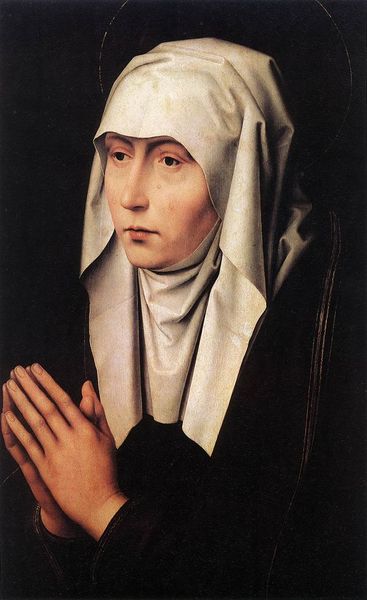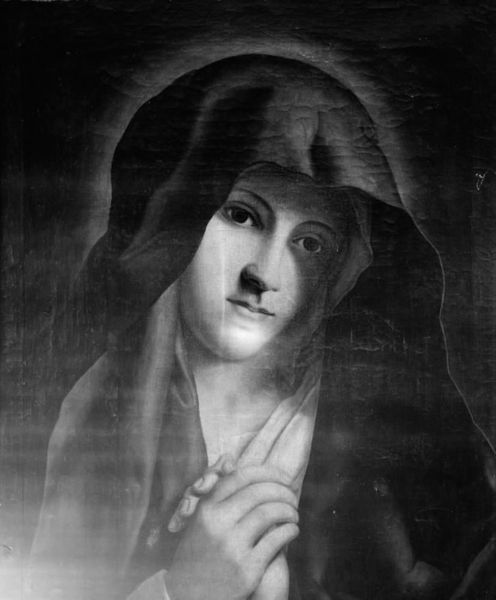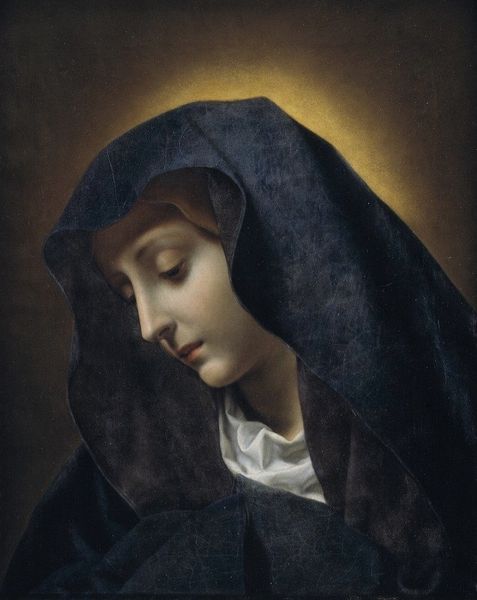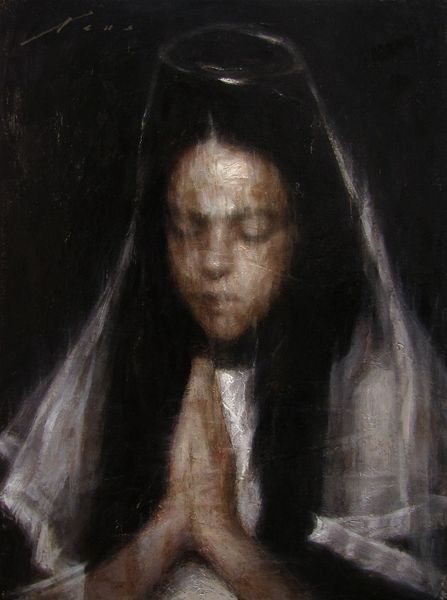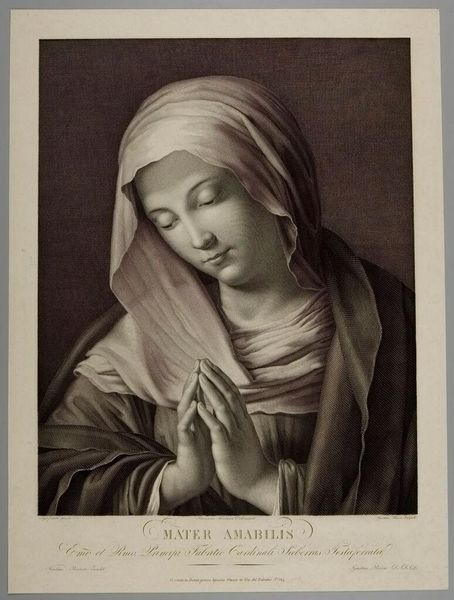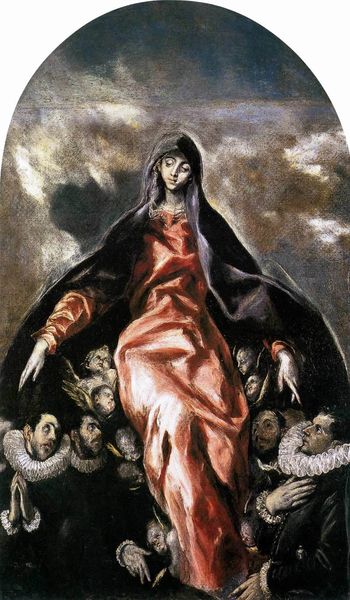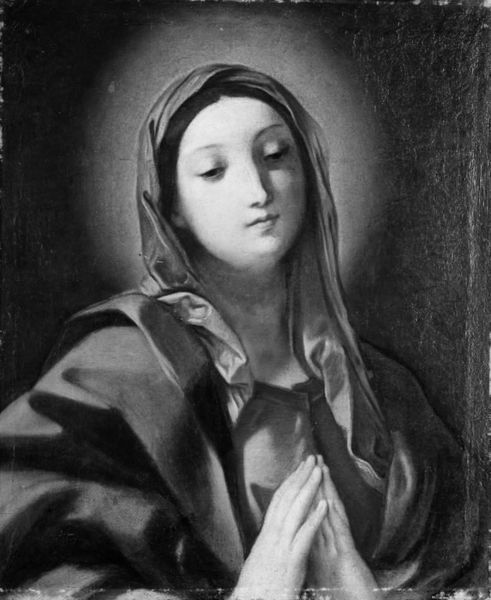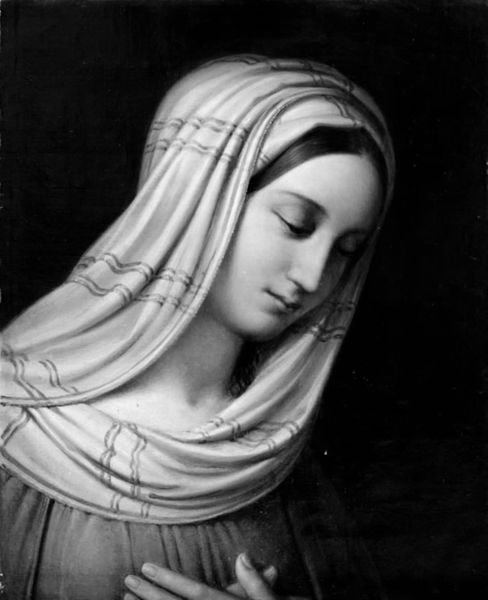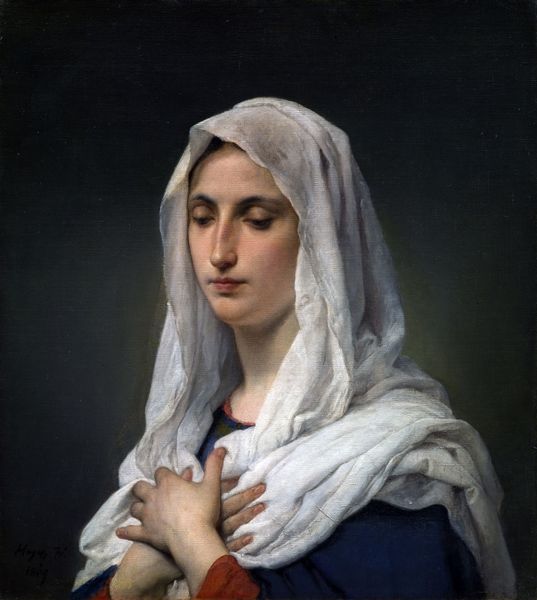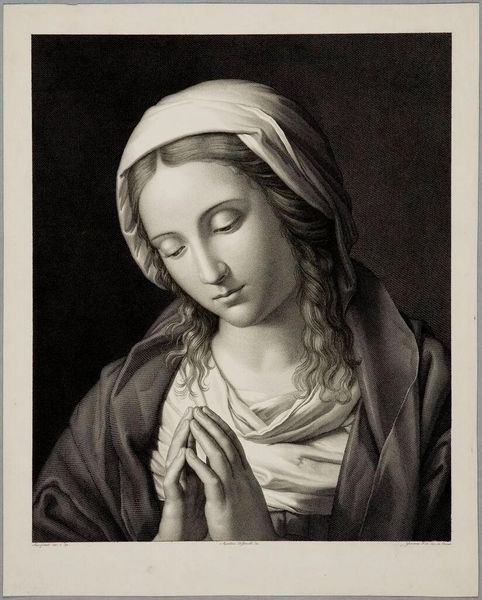
Portrait of Sister Maria Caterina 1734
0:00
0:00
rosalbacarriera
Ca' Rezzonico (Museo del Settecento), Venice, Italy
painting, pastel
#
portrait
#
painting
#
pastel
#
rococo
Copyright: Public domain
Editor: Here we have Rosalba Carriera’s “Portrait of Sister Maria Caterina,” from 1734, rendered in pastel. It’s strikingly somber, yet something about her downward gaze and clasped hands also projects peace. What historical forces might have been at play that influenced Carriera to paint a nun in this way? Curator: A great question! The 18th century, despite its Rococo flourishes, witnessed evolving roles for women, particularly in religious contexts. Convents offered women education and autonomy, escaping societal pressures of marriage. But Carriera's choice to portray her is deliberate. Editor: Deliberate how? Curator: Look closely. Carriera was celebrated by the French Royal court for her work. Pastel was seen as "delicate," and Rococo emphasized refined subjects. Considering the setting, what do you think it meant for a famous portraitist, often employed for beauty, to depict a nun in this humble way? Editor: Perhaps to humanize the Church, which had plenty of critics? To make the subject more relatable? Curator: Exactly! By representing a nun not as an austere figure, but as an individual, Carriera challenged perceptions of the cloistered life. Moreover, by choosing pastel – itself associated with grace – for a subject that would often have been rendered in much darker tones, she softened the Church, and softened the perception of religion as something inherently stuffy. Editor: I didn’t consider how her medium might've played into societal assumptions about delicacy and virtue. Curator: And vice versa. Even the act of display—putting her work into the public eye—brought visibility and dignity to Sister Maria Caterina and her profession. Editor: That gives me a lot to consider about artistic choices reflecting societal roles, even within a single portrait.
Comments
No comments
Be the first to comment and join the conversation on the ultimate creative platform.
